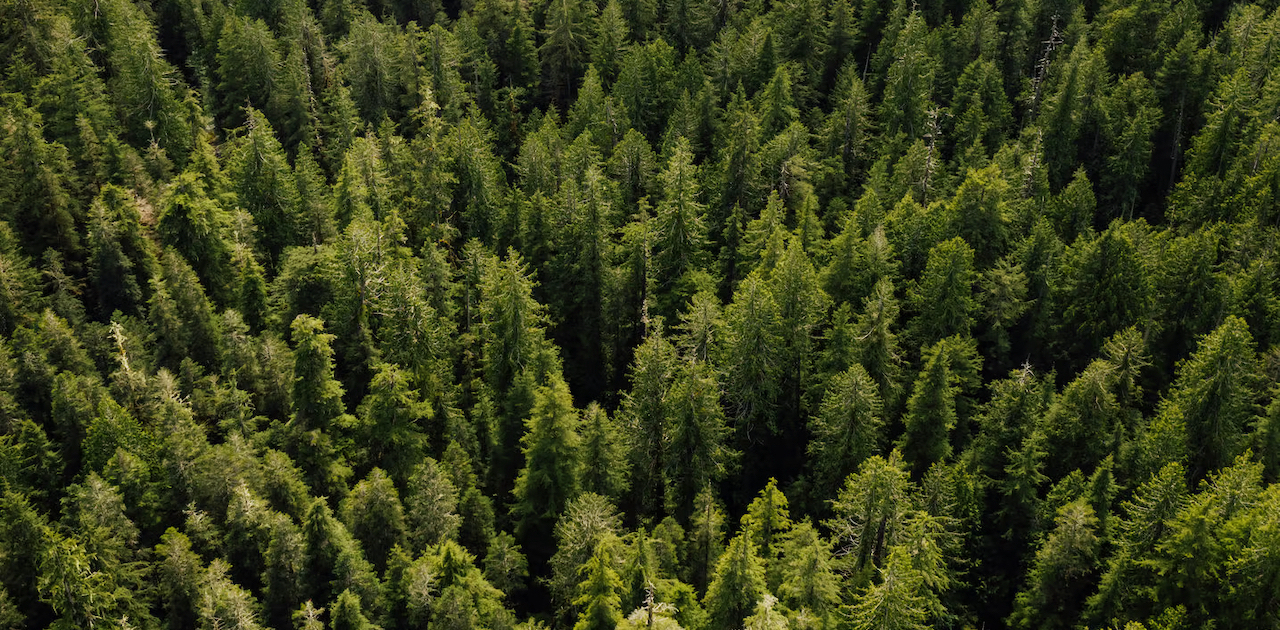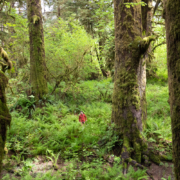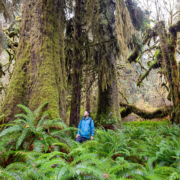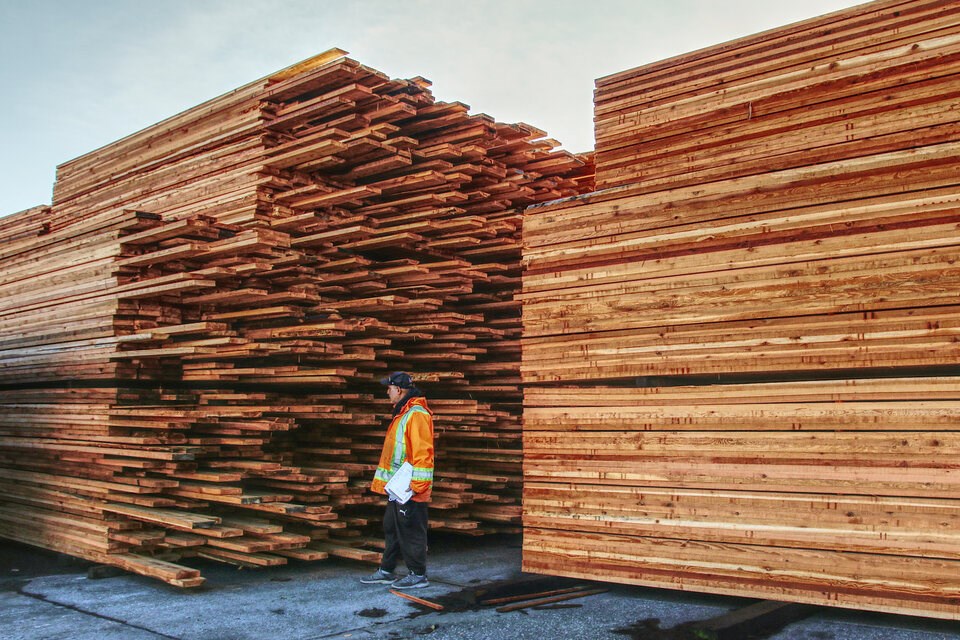 Nov 9 2023
Nov 9 2023The Narwhal: A billion dollars for nature in BC as long-awaited agreement is signed
November 3, 2023
By Ainslie Cruickshank
The Narwhal
See the original article.
The tripartite nature agreement comes with new and old funding to protect old-growth forests, species at risk.
Federal, provincial and First Nations leaders gathered against the backdrop of Burrard Inlet Friday to announce a long-awaited nature agreement that promises further protections for old-growth forests and at-risk species.
The agreement, which runs through March 2030, comes with $1 billion in joint federal-provincial funding — some of which has already been announced — including $50 million from Ottawa to permanently protect 1.3 million hectares of “high priority” old-growth forests in BC.
Premier David Eby called it a “historic partnership.”
“We are so excited because it will enable us to fast track our old-growth protection work, it will enable us to protect habitat for species that are at-risk in our province,” he said.
The agreement — signed by the provincial and federal governments and the First Nations Leadership Council — also includes commitments to support Indigenous-led conservation initiatives, conserve enough old forest habitat to support the recovery of 250 spotted owls and restore 140,000 hectares of degraded habitat within the next two years.
“This is a major, major agreement on protecting nature,” Minister of Environment and Climate Change Steven Guilbeault told The Narwhal ahead of Friday’s announcement.
“I think people will look at this agreement and say, ‘OK, this is how it needs to be done going forward now in Canada,’ ” he said. “It’s nature, it’s conservation, it’s restoration, but it’s also about reconciliation.”

Recovery of endangered species, such as caribou and spotted owls, is one of the key goals of the new nature agreement. Photo: Ryan Dickie / The Narwhal
The governments have committed to working with Indigenous Rights holders to implement the agreement in a way that’s consistent with the United Nations Declaration on the Rights of Indigenous Peoples.
“Fundamentally, we need to be a part of the decision-making process,” Terry Teegee, the Regional Chief of the British Columbia Assembly of First Nations, said during Friday’s announcement.
“We have a sacred duty to do our utmost to protect the land, to nurture the land, and this agreement serves that purpose,” Grand Chief Stewart Phillip, president of the Union of British Columbia Indian Chiefs said. “It’s the right thing to do for our grandchildren and future generations.”
Conservation groups welcome new agreement to protect nature amid unprecedented biodiversity decline
Ken Wu, the executive director of the Endangered Ecosystems Alliance, called the new agreement a “huge leap forward to supercharge the expansion of the protected area system in British Columbia.”
Dedicated funding is crucial for enabling Indigenous-led conservation initiatives, he said.
But one thing he will be watching for moving forward are ecosystem-based protection targets, to ensure conservation of the highest risk ecosystems.
The agreement comes at a critical time for nature globally. Biodiversity is declining with unprecedented speed and scientists warn the world could be in the midst of the sixth mass extinction event. One million species are at risk of disappearing, according to a 2019 global assessment. Others have already been lost.
In Canada alone, 5,000 species — such as the western sandpiper, blue whale, eastern prickly-pear cactus and the Vancouver marmot — are at some risk of extinction, according to a comprehensive survey of the country’s biodiversity.
Habitat destruction from clearcut logging, mining, oil and gas extraction and expansive urban development is a driving force behind biodiversity loss, but climate change, invasive species and over-hunting and fishing are also major contributors.
Under the Kunming-Montreal Global Biodiversity Framework signed at COP15 in December 2022, Canada and 195 other countries agreed to take urgent action to stem nature losses, including by conserving 30 per cent of land and waters by 2030.
But Canada would be hard-pressed to meet its commitments without the support of provinces, territories and Indigenous nations.
Through nature agreements, the federal government is offering major funding injections for provinces and territories that agree to stronger conservation action. The first, a $20.6 million agreement with the Yukon, was announced at COP15.
The BC agreement comes after three years of negotiations between the federal and provincial government and one year of trilateral negotiations with the First Nations Leadership Council, which comprises the British Columbia Assembly of First Nations, the Union of British Columbia Indian Chiefs and the First Nations Summit.
Provincial funding for the agreement comes through existing programs and initiatives, including modernized land use planning, forest landscape planning and the new conservation financing mechanism announced last week. At least $104 million of federal funding for restoration is being allocated through the federal government’s initiative to plant two billion trees over ten years.
Jens Wieting, a senior forest and climate campaigner at Sierra Club BC, said the BC nature agreement has “all the ingredients to speed up progress” towards meeting the 2030 targets, but “it must translate to change on the ground.”
‘Nothing else can put this new agreement to the test as the spotted owl can’
BC has made significant commitments to both protect 30 per cent of land in the province by 2030 and also to transform the way decisions about land and natural resources are made.
But internal government records show the province also saw the nature agreement as a way to avoid direct federal intervention to protect at-risk species. Though it rarely uses it, the federal government has authority under the Species At Risk Act to intervene in provincial land use decisions to protect at-risk species and has been urged to do so in the case of spotted owls.
Spotted owls were listed as endangered under the act 20 years ago and yet the old-growth forests they depend on are still logged today.
Guilbeault recommended the federal government issue an emergency order this year to protect critical spotted owl habitat, but the BC government lobbied against it and ultimately the federal cabinet chose not to issue the order.
The new nature agreement commits the governments to finalizing a spotted owl recovery strategy and protecting enough of the raptor’s old-growth forest habitat to one day support 250 owls in the wild. Additionally, it lays out commitments to increase capacity for BC’s captive breeding program and efforts to control barred owl numbers.
“We’re putting money on the table, the BC government is putting money on the table,” Guilbeault said. “I think that’s a significant change from where we were 20, 10 or even five years ago,” he said.
Following the press conference, Spuzzum First Nation Chief James Hobart said “nothing else can put this new agreement to the test as the spotted owl can.”
“They’re really important to us,” he said. “When we see a spotted owl, sometimes we think of it as somebody that’s passed on.”
“When you only see one around, it’s not really a good indicator of our messengers,” he said.
The spotted owl, he said, should determine where logging can and can’t happen. And if a First Nation says it doesn’t want logging in its territory, it should be “a no go zone,” Hobart said. “We should not have to have that discussion more than once,” he said.
‘Legal gaps’ leave nature vulnerable as BC develops new biodiversity policy framework
Alongside efforts to recover endangered species such as the spotted owl, the nature agreement lays out commitments to address threats to species early on by identifying and protecting critical habitat to prevent crisis-level population declines.
These early actions could help avoid the need to list species under the federal Species at Risk Act, the agreement says.
That’s a concern for Charlotte Dawe, conservation and policy campaigner for the Wilderness Committee.
“If we’re not listing species that need to be listed, that’s an issue,” she said. Those decisions should be science-based, not determined by whether the government is already taking recovery actions or by potential impacts on industry, she said.
One of the long-standing conservation challenges in BC is the piecemeal approach the province has taken to protecting at-risk species.
Conservation groups say it’s not working. A report last year from the Wilderness Committee and Sierra Club BC found “huge legal gaps” are driving species loss and urged the province to develop a new law that prioritizes ecosystem health and protects species at risk.
The Forest Practices Board, meanwhile, showed BC is failing to use even the tools it already has at its disposal to protect at-risk species’ critical habitat in a report released this summer. The report found, for instance, the province hasn’t updated its legal list of species at risk since 2006, meaning it can’t use tools under the Forest and Range Practices Act to protect numerous species scientists consider to be under threat.
BC has committed to overhauling the way it manages land and is working with First Nations to develop a new biodiversity and ecosystem health framework, a draft of which is expected to be released for public consultation this year.
But critics worry the promised transformation is taking too long to materialize, as old-growth forests continue to fall.
And while the new nature agreement outlines ambitious commitments, Victoria Watson, a lawyer with the environmental law charity Ecojustice, notes the agreement itself isn’t legally binding.
“Law and regulations that hold Canada and BC accountable to some of the commitments that have been outlined in the agreement are really essential,” she said. As is a “willingness on the part of Canada and BC to really share authority on the ground with First Nations.”
In the short-term, Watson said she’ll be looking for “immediate action on the ground,” including new old-growth logging deferrals.
Guilbeault said old-growth forests were “at the heart” of nature agreement discussions.
Finalizing the agreement is an “extremely positive step,” he said, one that should see tens of millions of dollars in federal funding actually flowing to the BC government and First Nations to support conservation.
“My hope,” Guilbeault said, is “especially on species at risk and old-growth that we can move as quickly as possible because obviously it’s a matter of some urgency.”
Updated Nov. 3, 2023, at 2:55 p.m. PT: This story has been updated to include quotes from the nature agreement announcement and reactions to it.
See the original article.








